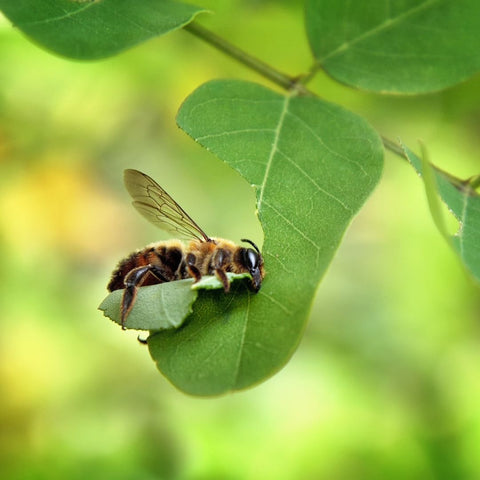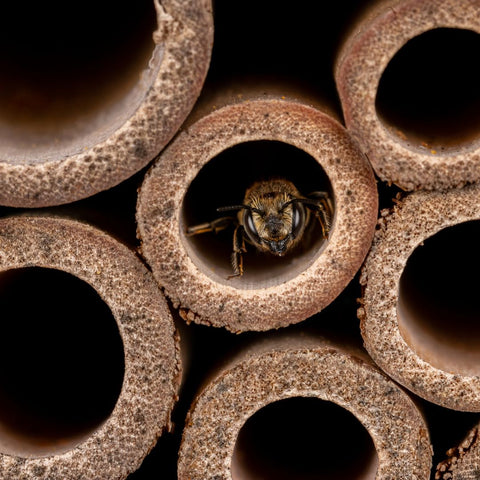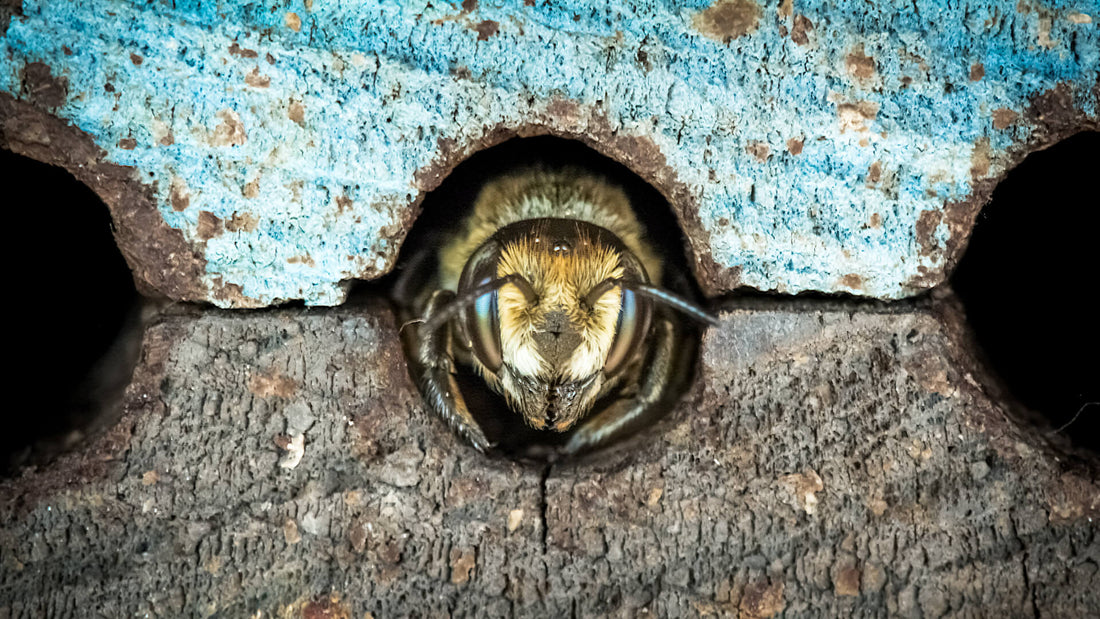Leaves are Made for Munching
In Britain, we have 7 different leaf-cutting bee species.
As their name suggests, these bees use cuttings of leaves to make their nests. (But don't worry, the sections they cut do no severe damage to the plants!)

Identifying a Muncher
Leaf-cutter bees are dark brown bees with orange or brown hairs with an 8-14mm wingspan.
If you find sections of flowers or leaves missing, you probably have a female leaf-cutting bee in your garden.
(You can find out more about other kinds of bees on our Bee ID page.)
Where Can You Find Leaf-Cutter Bees?
These bees can be found in gardens across the UK and tend to hide out in wall cavities, hollow plant stems and dead wood.
Are Leaf-Cutter Bees Solitary or Social?
Leaf-cutter bees are solitary bees, meaning the females prioritise caring for their young and laying their eggs somewhere safe.
What Do They Do with the Leaves?
After chowing down on some leaves, she will take the sections between her legs and carry them to her nest. (This is only after she has laid her eggs and has gathered enough stored food.) There, she will 'cap' off the cells with her saliva and the leaves she has collected in hollow tubes or dry plant cavities.

Now you know the leaf-cutter bee basics, here are some of our top facts to get you buzzing...
Fun Facts
- At first glance, they look like a dark-coloured honey bee, but their undersides are distinctly orange.
- These bees make adorable semi-circles when they collect their leaf sections.
- Leaf-cutter bees especially love nibbling on roses.
- They are one of the few insects that like mint leaves! Most spiders and other bugs find this smell too strong, and many people use it as a deterrent.
- TITLE The leaf-cutter bees are purely builders, and don't eat the leaves or petals they collect. Like other bees, they feed on nectar and pollen.

How Can We Support our Leaf-cutter Bees?
You can support our leaf-cutter bees by drilling holes for them to nest in dead wood or installing a bee hotel. Leaf-cutter bees tend to work smarter, not harder, searching out pre-existing holes made by us or other bugs, like beetles
Sadly, due to their leaf-munching pastime, people see them as pests. Although they can eagerly cut holes in your prize roses or other plants, they will not harm the plants themselves. The best way to control them is to get some other plants and place a cheesecloth on your favourite plants.
We rely on our bees for food and agriculture. Specifically, bees pollinate 80% of our flowering plants!
You can find out why bees are important or view our bee blog for further information and fun facts.
Thank you for caring for our fuzzy friends as they continue pollinating planet Earth for us!


